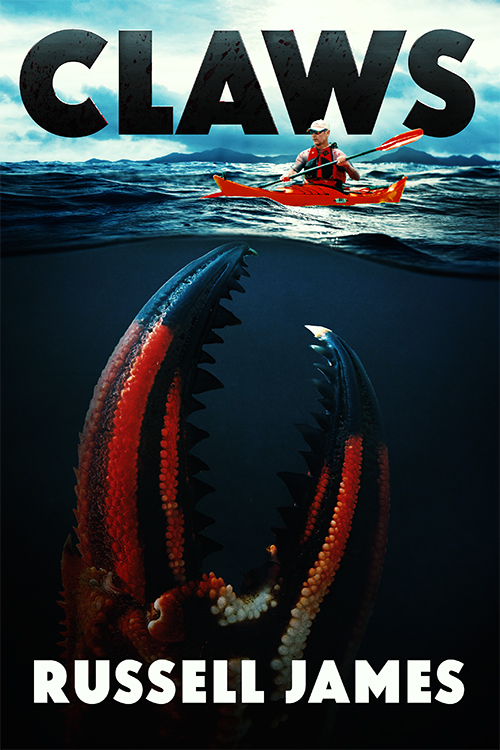
The first Ranger Kathy West Adventure, Claws, is set at Fort Jefferson in Dry Tortugas National Park. The fort is on a 16 acre island 68 miles west of Key West, Florida. Here are some facts and pictures about that location.

The fort’s purpose was to protect a safe anchorage for the military vessels patrolling America’s southern coast after the War of 1812. Construction began in 1846. The design of the fort called for a three-tiered six-sided 420 heavy-gun fort, with two sides measuring 325 feet, and four sides measuring 477 feet.
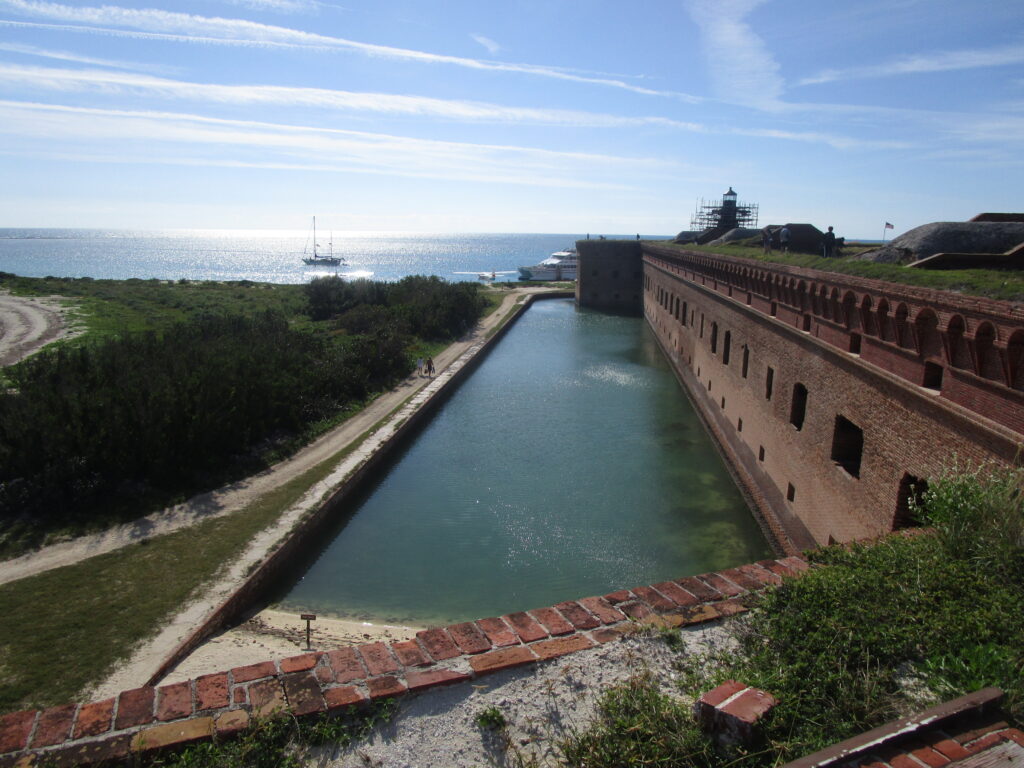
The walls met at corner bastions, which are large projections designed to allow defensive fire along the faces of the walls they joined. A moat surrounds the fort.
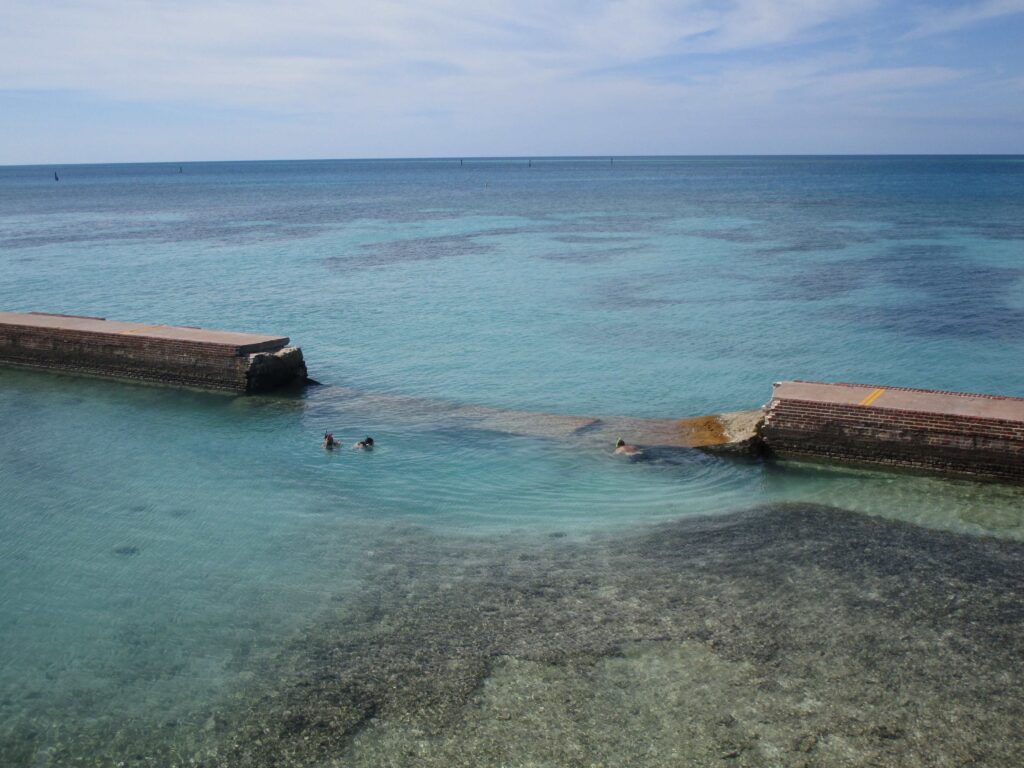
Nature had taken its toll on some sections of the seawall around the moat.
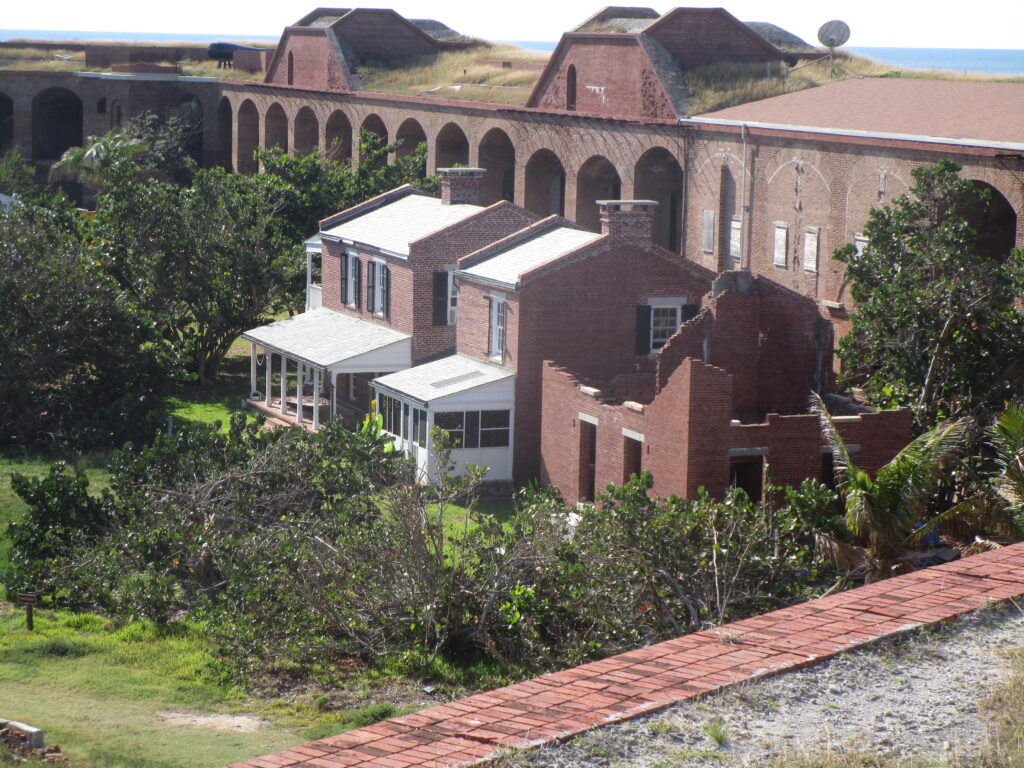
At its peak, the fort hosted almost 2,000 inhabitants. They lived in quarters along the parade ground in the fort’s interior. The picture above is of the officers’ quarters, which still stand and are used by the park rangers.
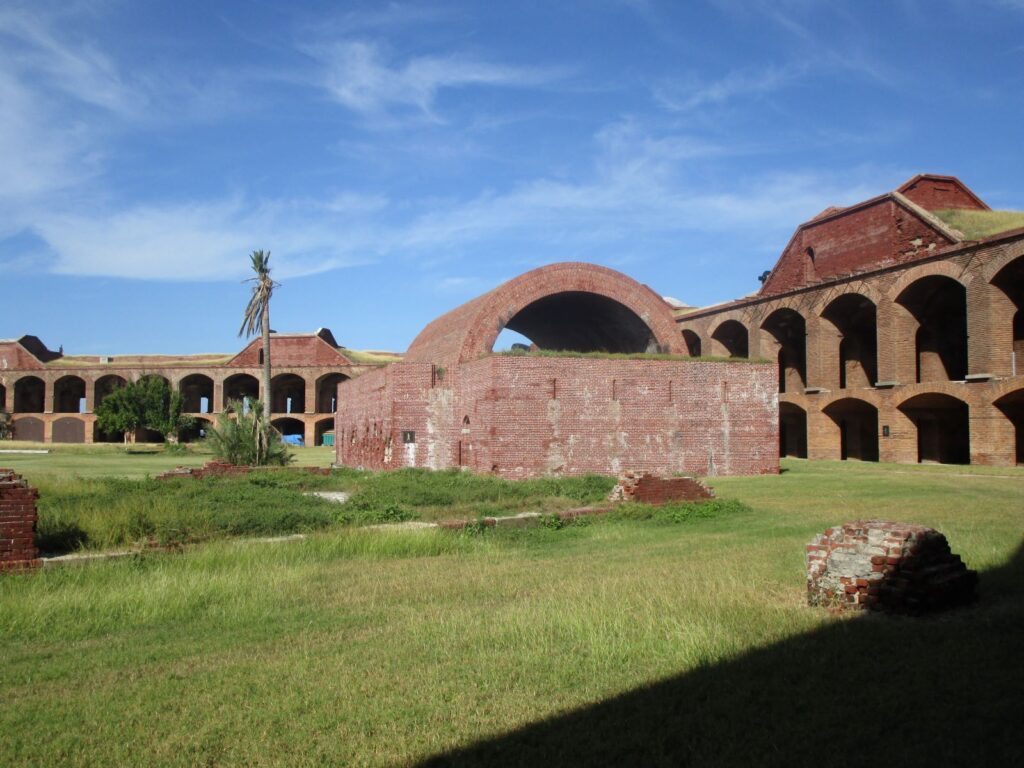
The remains of a massive magazine sit on the parade ground as well. Thirty-two magazines within the fort supplied the guns. This was one was used to resupply the ships that docked. The walls are heavily reinforced, the interior floors made of wood to reduce sparks, and the arch once supported a concrete ceiling. No one wanted a few tons of gunpowder to explode on its own.
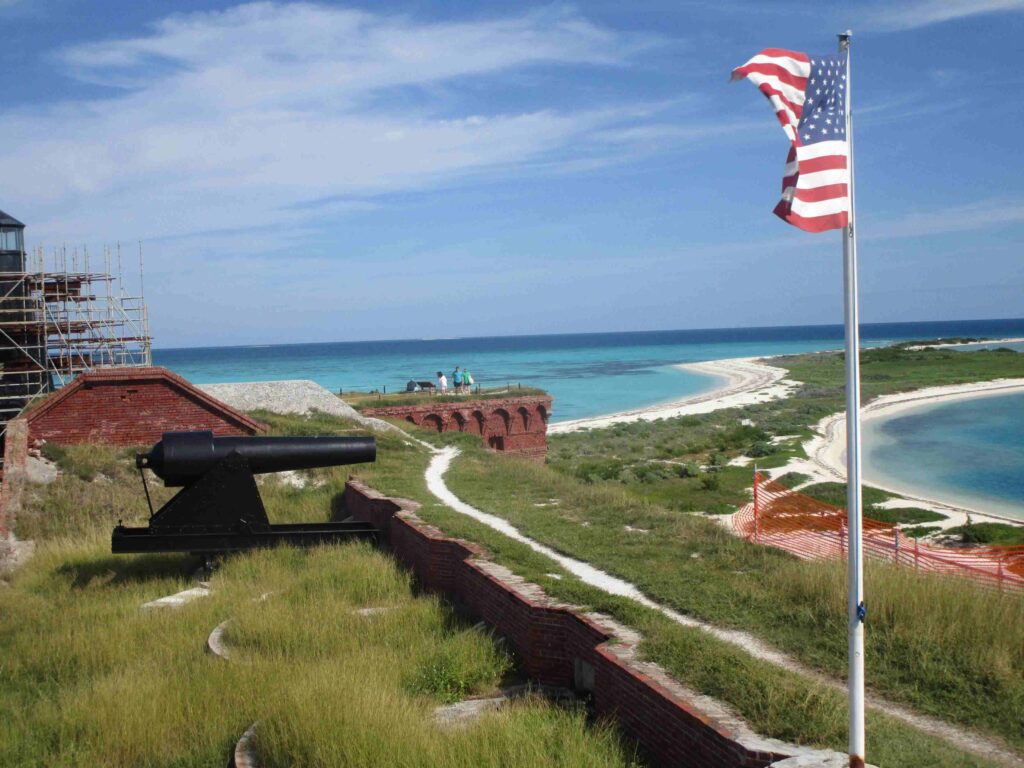
Each tier of casemates contained 150 guns, and another 150 were placed on top of the fort itself. The heavy guns were mounted inside the walls in a string of open casemates, or gunrooms, facing outward toward the sea through large openings called embrasures.
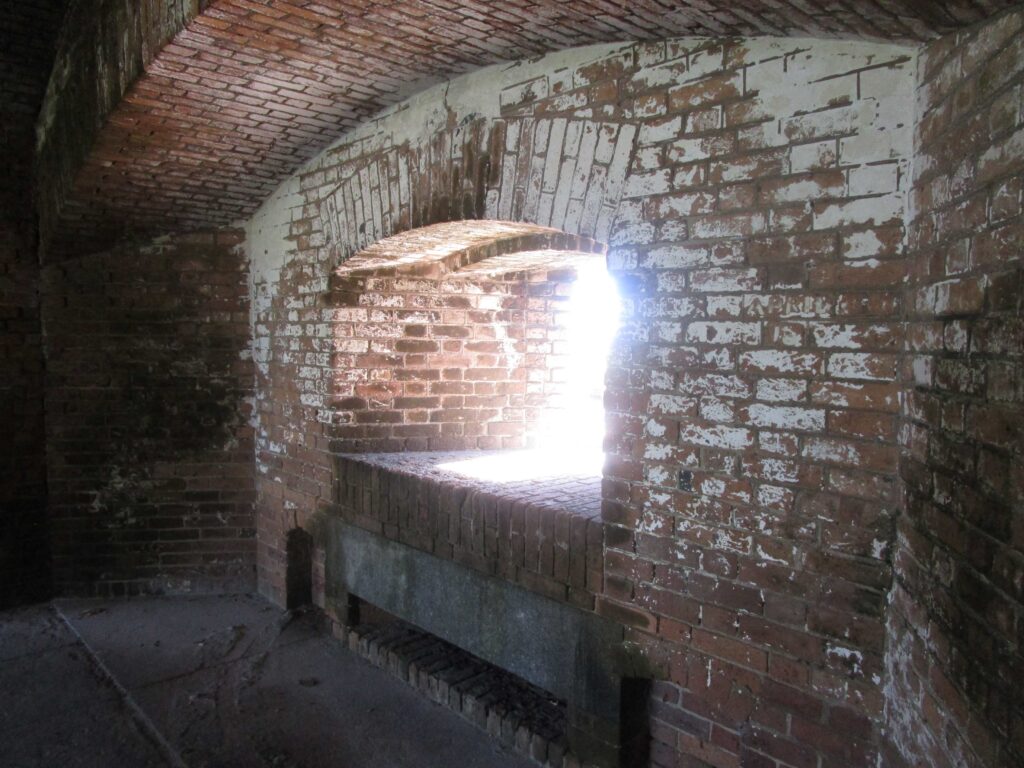
The fort is made of 16,000,000 bricks and the walls are massively thick.
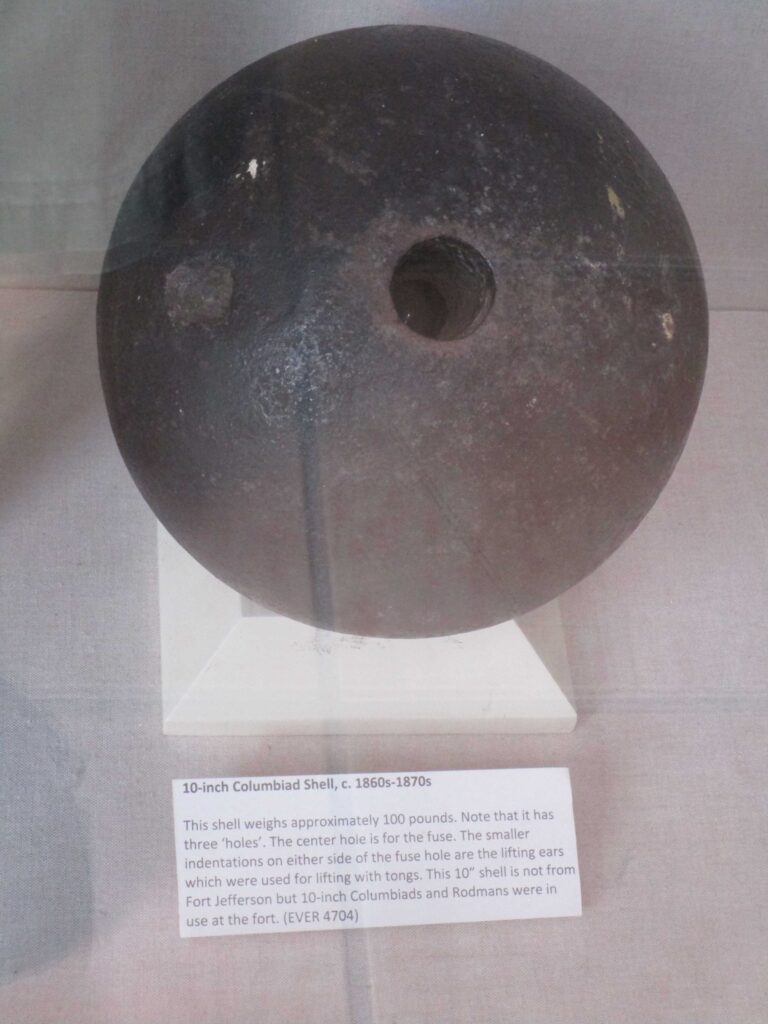
The cannons could fire a variety of projectiles. Cannonballs were the most common. The example above was an exploding projectile. A fuse in the hole lit when the shell was fired (theoretically) and set off the charge in the center of the ball.
Fort Jefferson was never assaulted and the cannons were never fired in combat.
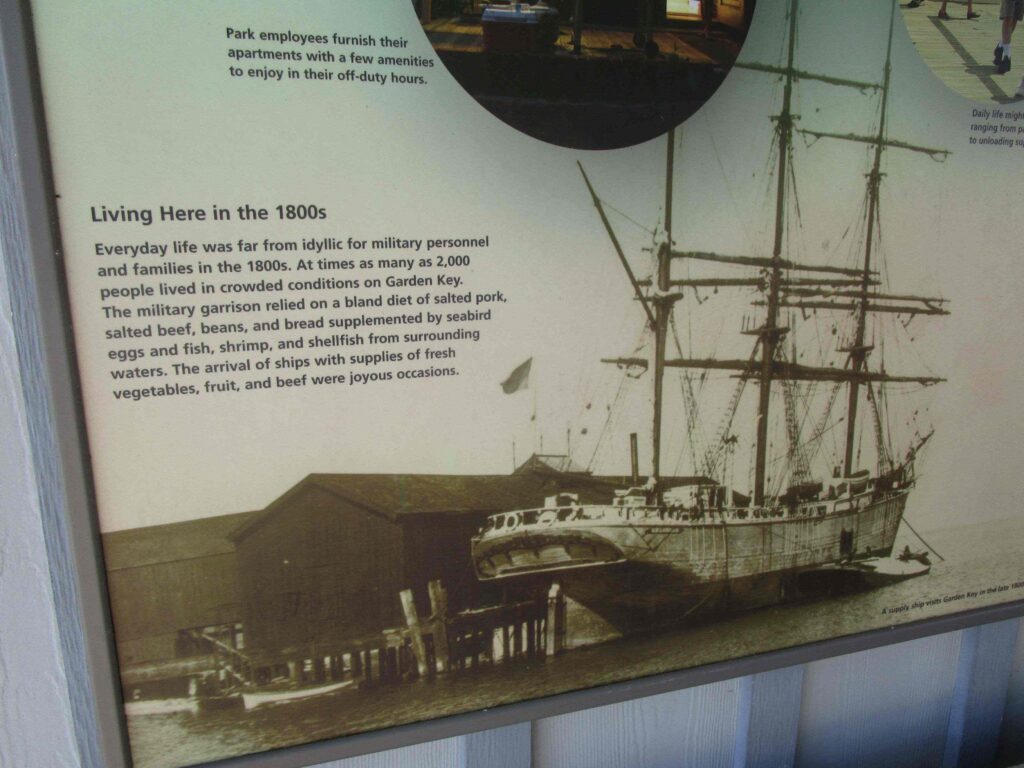
A day visit to the fort is a reminder of how tough life out there had to have been. The first problem was the isolation, with the only contact with the rest of the world being through mail delivered by ship. The island is horrifically hot year-round and there was no air conditioning, or even electricity for that matter. Food was monotonous and commonly spoiled by the weather. There was no source of fresh water, so the residents relied on rainwater cisterns.
The Union Army occupied the fort throughout the Civil War and it housed Union Army prisoners, mostly deserters. At war’s end it housed other prisoners, the most famous being Dr. Samuel Mudd, who set the broken leg of John Wilkes Booth after Booth assassinated President Abraham Lincoln.
Civil War combat proved that forts like this were obsolete. In 1888, the Army turned the fort over to the Marine-Hospital Service to be operated as a quarantine station. On January 4, 1935, President Franklin D. Roosevelt visited the area by ship and designated the area as Fort Jefferson National Monument.
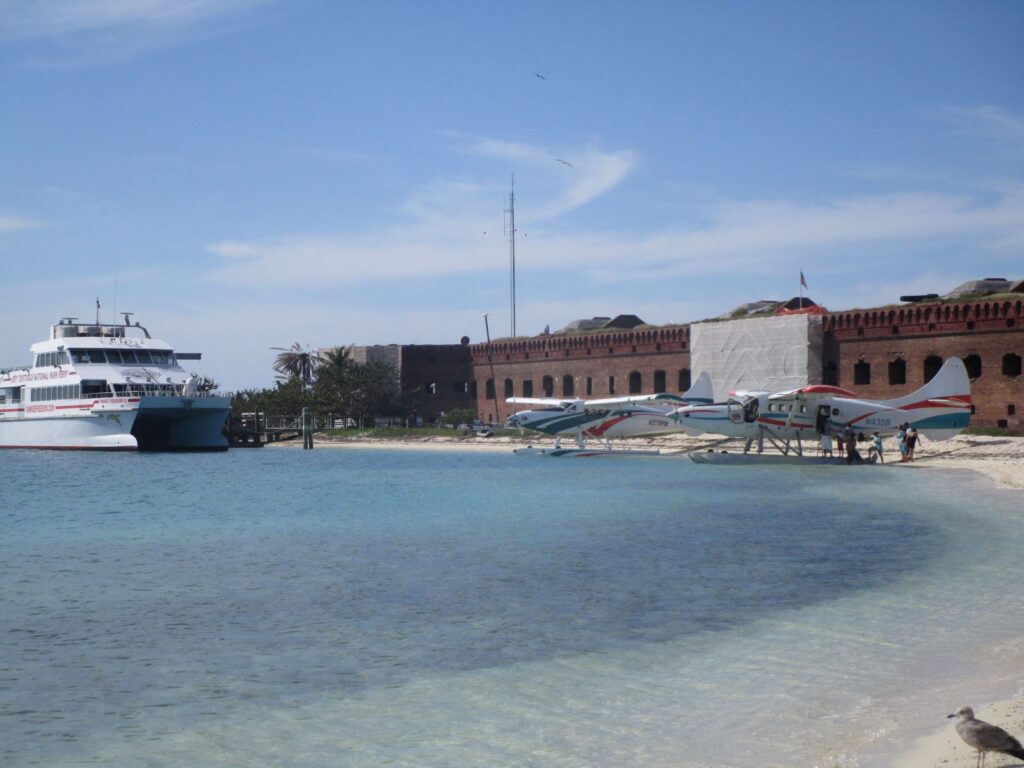
Other than sailing your own boat, there are two ways to get to the fort today: ferry service and seaplane. Neither are cheap and both sell out well in advance, so plan ahead. Visiting is worth the effort, especially if you enjoy snorkeling.
Ranger Kathy West and her partner Nathan Toland uncover much of this history (and more) as they fight to keep giant crabs from rolling over the fort and heading for the mainland. If you haven’t read Claws yet, you can check it out here on Amazon.

